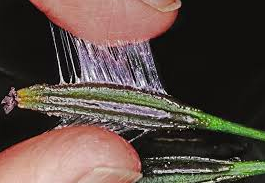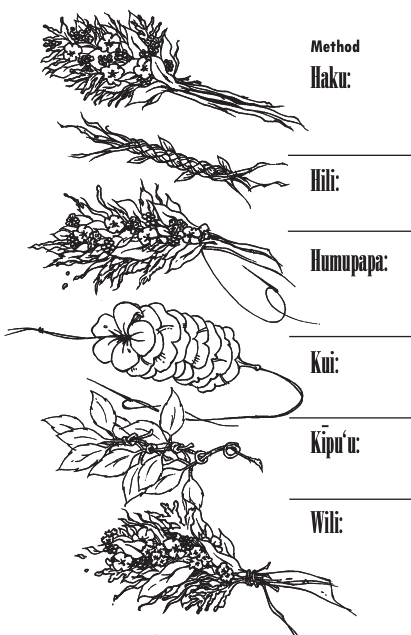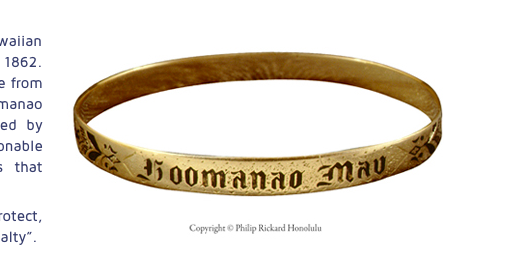Jewelry in the Hawaiian islands
- Kaiya-lynn Kaha

- Aug 27, 2019
- 4 min read
The earliest forms of jewelry in the Hawaiian islands can be dated back to between 750 a.d. - 1300ʻs. Lei (necklaces) and kupeʻe (bracelets) were originally made by combining different plants, feathers, nuts, or seeds together to make patterns and was worn by both the Maka'āinana (commoners) and Aliʻi (chiefs). Sometimes a specific pattern in the design of the lei would indicate which island or part of an island the person was from.
Traditional lei types
Niho palaoa: This type of lei was often made from whale teeth and carved into different shapes or with intricate patterns. It was commonly made into a hook and strung on kaula made from coconut (cordage).
symbol of the Aliʻi and of power
Lei Hulu: Known as the lei of feathers, this lei is one of the most intricate and time consuming. It required a lot of patience and care as hundreds of feathers would need to be collected so that it could be sewn together to create a lei. Bird catchers were hired to gather the feathers from birds to use in these lei. The bird catchers would use the milky sap from a plant named Pāpala Kēpau and spread it on the branches of trees. Depending on the variety of feather the lei makers wanted, the bird catchers would choose specific trees birds fed from to spread the sap on. When a bird landed on these sticky branches it would get stuck and the bird catchers would pluck a few feathers before setting it free and repeating the process all over again, until enough feathers were collected.
Lei Kukui: This lei was often made from the nuts of the Kukui tree. The Kukui nut is surrounded by iʻo (the meat that protects the nut from the outside elements) which first needs to taken off. Once the outside meat of the nut is peeled off the nut is then sanded down and polished with oil. The oil will bring out the color of the nut and add a shine to the jewelry. Holes are then drilled into the nuts so that it can be strung along a string and be worn around the neck.
Lei Pupu: Pupu shells found along the beach which is then sanded, sometimes drilled to make holes, and then polished with oil, and strung along a string to be worn.
Lei Kī: Kī is a multi-purpose plant that is used for ailments, baskets, rituals, and adornments. It varies from colors like green, red, purple, and yellow. To make this lei the leaves of the Kī would be cleaned with a warm wash cloth, de-ribbed, and heated over a fire by sweeping it back and forth over it. Today many use their stoves, microwaves, and or irons to heat the leaves after itʻs cleaned to make it more flexible. After itʻs heated, the leaves are twisted in a certain way and either braided or twisted together to create a lei or kupeʻe. People will often add other plants into the lei to create a more intricate design.
Lei making styles
Haku: This mounted style of lei begins with a braid. The chosen material is then added into each braided section to mount it to the strands.
Hili: In this style of lei, usually only one material is used, and it is made by braiding together at least 3 strands of the selected material.
Kui: This is a common style of lei. A lei maker uses a needle and pierces their materials; making little holes so that a string can be strung through.
Hipu’u: This form of lei is much like the daisy chains girls used to make as a kid. The plant is knotted at its stem while the next stem is then strung through the knot; making a chain.
Wili: This twisting method requires short lengths of the material to be held in place with a coil wrapped around them. The wrap is often made of raffia.
Hilo: With a rope made of two twisted strands, this twisting method of lei making often used ti/ki leaves.
Hawaiiʻs first modern jewelry
What we would consider to be jewelry today was first introduced to the islands in 1862. The first Hawaiian bracelets was given to Queen Emma and Princess Liliʻuokalani as a gift by Queen Victoria when they attended her golden jubilee.
Engraved on Liliʻuokalaniʻs bracelet were the words "Hoʻomau" which means "Lasting memory".
As Princess Liliʻuokalani returned to the islands, she also gifted an English school teacher who had assisted the Queen with palace balls (Zoe Atkins) with a bangle engraved on it "Aloha Oe". When Atkins went to school the next day, many of the young girls started talking about her jewelry. Soon other families were ordering themselves their own golden bracelets and it became a tradition.
Gold bracelets with inscriptions are now often passed down through generation as prized possessions, given to babies as a gift during their first birthdays, or for a womanʻs wedding as a symbol of good fortune.
Rickard, Philip. "Hawaiian Heirloom Jewelry History". Philiprickard.Com, 2018, https://www.philiprickard.com/category-s/2060.htm.
Bibliography:
Early forms of Jewelry
Lei Types
Picture Citations
Lei styles
Hawaiiʻs first modern jewelry

































Comments